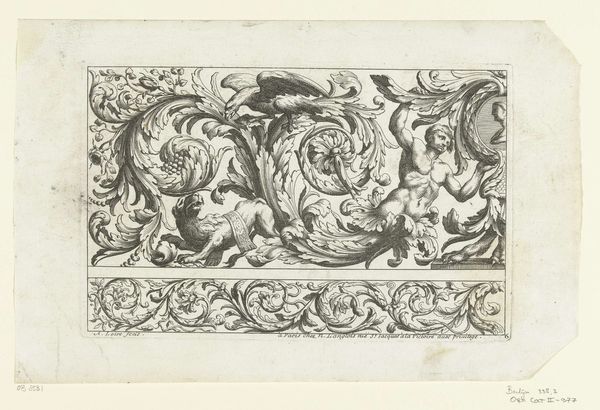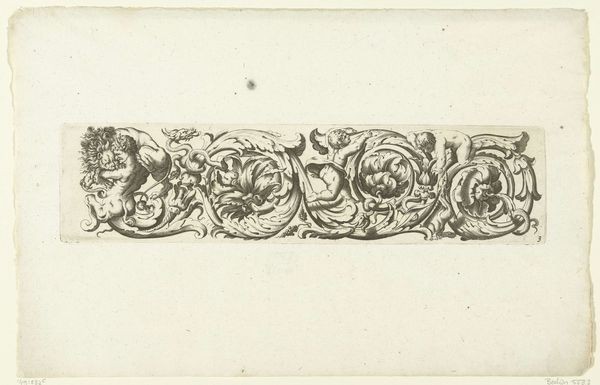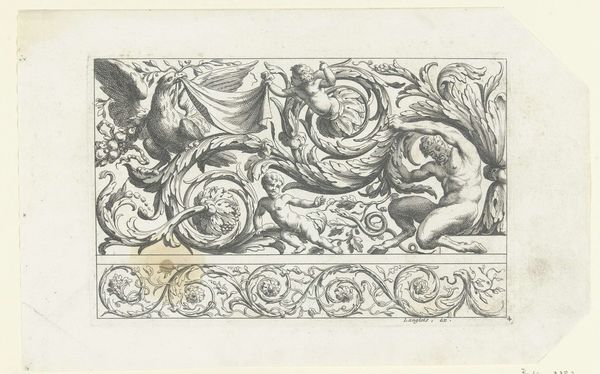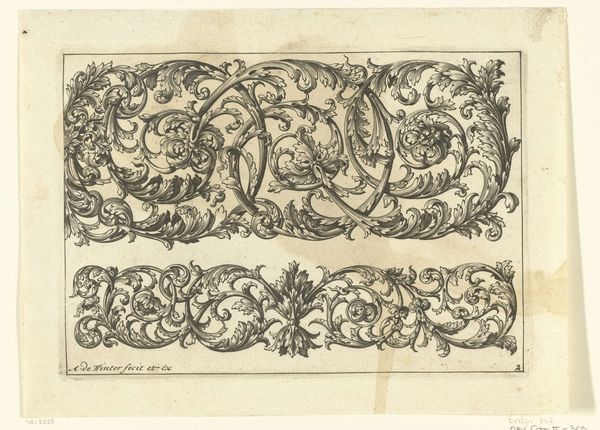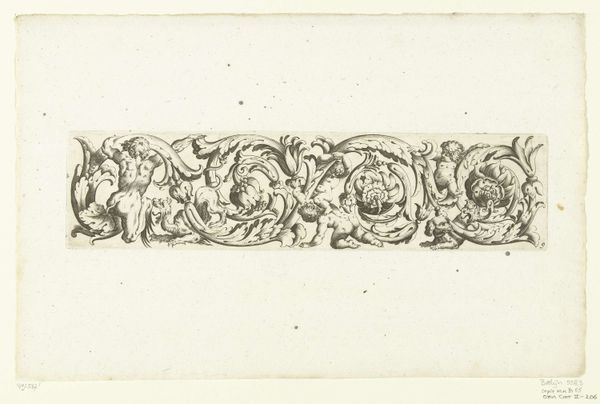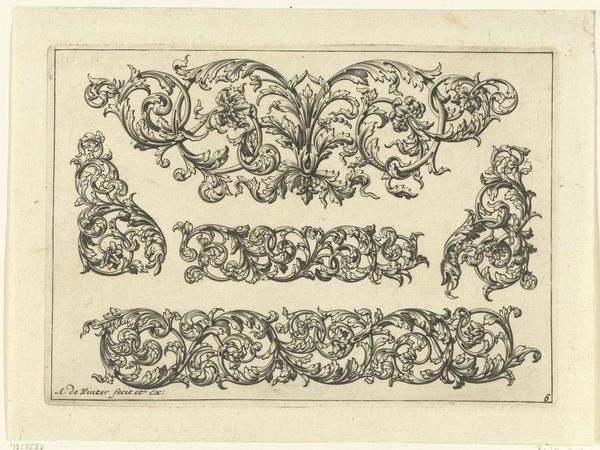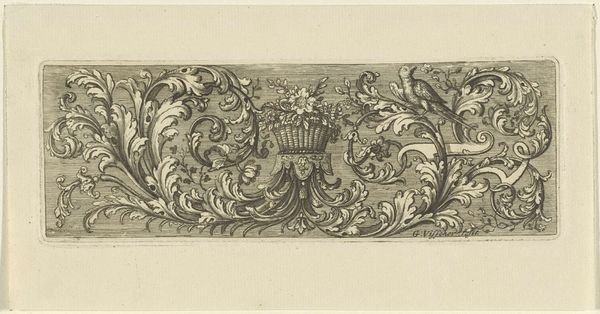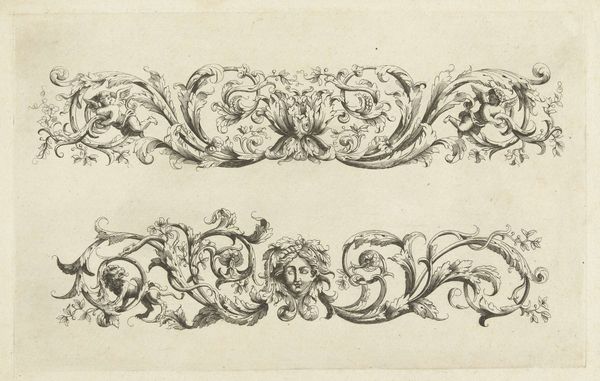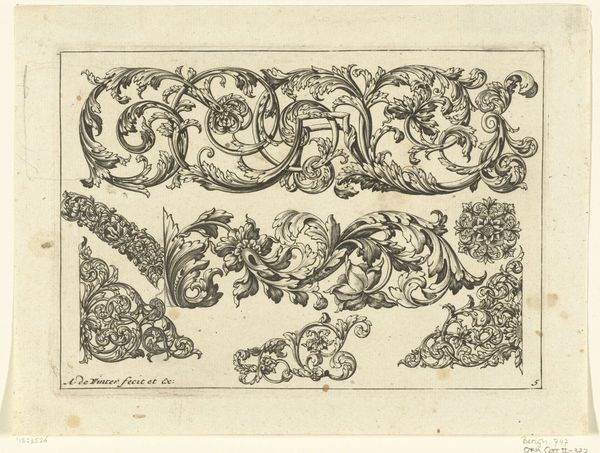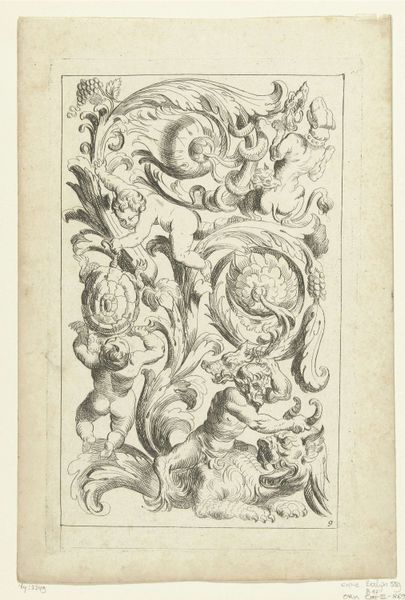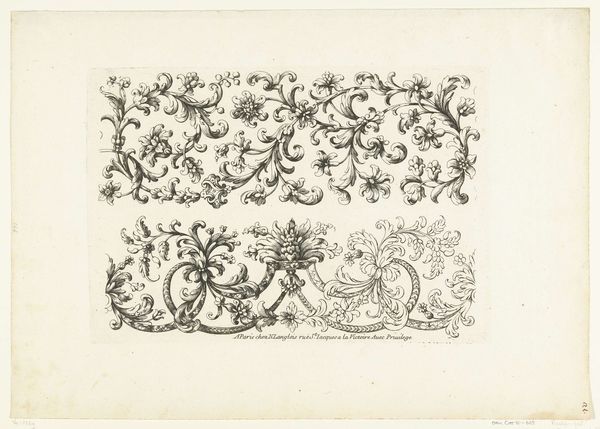
ink, engraving
#
portrait
#
baroque
#
figuration
#
ink line art
#
ink
#
line
#
decorative-art
#
engraving
Dimensions: height 148 mm, width 228 mm
Copyright: Rijks Museum: Open Domain
Curator: This elegant engraving, dating from around 1670 to 1690, is titled "Jongeman en twee putti tussen bladranken," which translates to "Young man and two putti among foliage." Alexis Loir is credited as the artist. It's an ink engraving, currently residing here at the Rijksmuseum. Editor: My immediate reaction is one of whimsical festivity. The composition seems to burst forth, brimming with life and decorative flourishes, almost theatrical in its ornamentation. Curator: Yes, that dynamism is quite characteristic of the Baroque style, wouldn't you agree? We see these exuberant displays across art forms, from architecture to decorative arts like this. Editor: Absolutely. And speaking of symbols, the putti are impossible to ignore. They’re often stand-ins for divine love or youthful innocence, and coupled with the lush foliage, we have recurring symbols of life, growth, and the idyllic. It is almost as though the youthful subject is framed by virtues on either side, his life a reflection of harmony and a love for the bounties of life. Curator: Precisely. It reflects the period’s fascination with classical motifs but reinterpreted through a distinctively Baroque lens. This image, meant as part of interior design, suggests wealth, refined tastes, and even social ambitions. How one displays images in domestic space reflects how they view themselves in relation to wider society. Editor: Looking closer, the execution feels so light, even airy, given the density of detail. Do you think this level of ornateness played a functional part in interiors? Curator: Indeed, prints such as this played a vital role. They functioned as prototypes and as accessible means for decoration that imitated and emulated those of wealthier elites. They acted as sources for craftspeople like sculptors and decorators, contributing to the wide diffusion of styles and aesthetics of the court. Editor: It's quite fascinating to think about the journey of images through cultures and time. We see echoes of these symbolic choices in many decorative pieces to this day. Curator: The way visual cues embedded in engravings transcend centuries says a lot about our continuous longing for harmony. Thanks for guiding me through this visual history, reflecting how artistic pieces become an intricate part of cultural and artistic lineage.
Comments
No comments
Be the first to comment and join the conversation on the ultimate creative platform.
